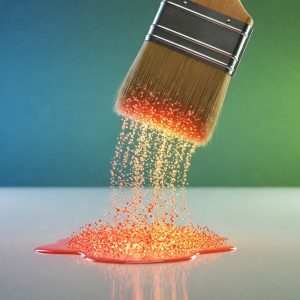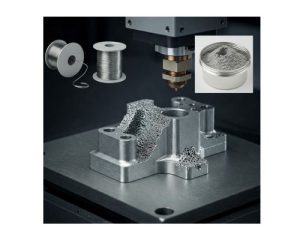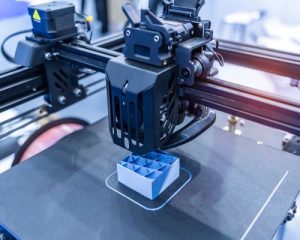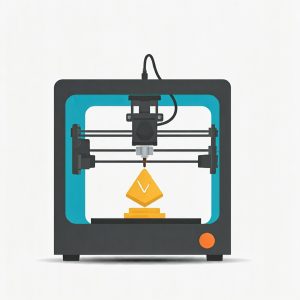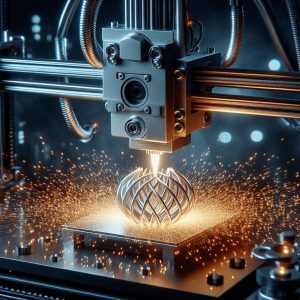While filament-based 3D printing is more commonly known, powder-based additive manufacturing is a powerful technique that offers unique advantages. Let’s demystify this process and explore the basics of 3D printing powders.
3D Printing Powders: A Beginner's Guide
What are 3D Printing Powders?
Unlike filament-based 3D printers that extrude melted plastic, powder-based printers utilize fine particles of materials. These powders can be made from various substances, including metals, ceramics, and polymers.
How Does Powder-Based 3D Printing Work?
The process typically involves:
Powder bed creation: A layer of powder is spread evenly across the build platform.
Material deposition: A laser or electron beam selectively melts or fuses the powder particles to create the desired shape.
Powder removal: Excess powder is removed, and the process is repeated for subsequent layers.
Types of Powder-Based 3D Printing
 There are several common powder-based 3D printing technologies:
There are several common powder-based 3D printing technologies:
Selective Laser Sintering (SLS): Uses a laser to fuse powdered material layer by layer.
Selective Laser Melting (SLM): Similar to SLS but melts the powder completely, creating denser parts.
Binder Jetting: Uses a liquid binder to bind powder particles together.
Direct Metal Laser Sintering (DMLS): A variation of SLS specifically for metal powders.
Advantages of Powder-Based 3D Printing:
Material versatility: Can be used with a wide range of materials.
Complex geometries: Can create intricate and detailed parts.
Stronger parts: Often produces parts with higher strength and durability.
Challenges of Powder-Based 3D Printing:
Higher costs: Typically more expensive than filament-based printing.
Post-processing: Requires additional steps to remove excess powder and finish parts.
Safety concerns: Handling metal and ceramic powders requires precautions.
Metal Powders for 3D Printing: Applications and Challenges
Metal 3D printing, a subset of additive manufacturing, has revolutionized the production of metal components. At the heart of this technology lies metal powders, which serve as the building blocks for intricate and complex structures. Let’s delve into the world of metal powders, exploring their applications and the challenges they present.
Understanding Metal Powders :
Metal powders are finely ground particles of metallic materials. They are the raw materials for various metal 3D printing processes such as Selective Laser Melting (SLM), Electron Beam Melting (EBM), and Binder Jetting. The properties of the final product largely depend on the characteristics of the metal powder, including particle size, shape, and composition.
Applications of Metal Powders in 3D Printing:
The versatility of metal powders has led to their adoption across numerous industries:
Aerospace: Metal 3D printing is used to create lightweight and high-strength components for aircraft and spacecraft.
Automotive: Production of complex engine parts, tooling, and prototypes.
Medical: Manufacturing of implants, dental prosthetics, and surgical instruments.
Energy: Creating components for turbines, heat exchangers, and other energy-related applications.
Tooling: Producing custom tooling for manufacturing processes.
Challenges in Using Metal Powders
Despite their potential, metal powders pose several challenges:
Powder Quality: Consistency in particle size, shape, and composition is crucial for print quality. Impurities can affect the final product’s properties. Buying the right quality powder is very necessary to achieve accurate results.
Powder Handling: Metal powders are often hazardous to handle, requiring specialized equipment and safety measures.
Build Parameters: Optimizing printing parameters for different metal powders can be complex.
Post-Processing: Metal parts often require extensive post-processing, including heat treatment and surface finishing.
Cost: Metal powders and the 3D printing process itself can be expensive compared to traditional manufacturing methods.
3d printing: Overcoming Challenges and Future Trends
To address these challenges, researchers and industry professionals are continuously working on:
Powder characterization: Developing advanced techniques to analyze powder properties.
Powder recycling: Implementing efficient methods to reuse metal powder.
Process optimization: Improving printing parameters and post-processing techniques.
New materials: Developing metal alloys specifically designed for 3D printing.
As technology advances, we can expect to see further breakthroughs in metal powder-based 3D printing, leading to wider adoption and more innovative applications.
Stainless Steel Powder for 3D Printing: A Deep Dive
Stainless steel, renowned for its corrosion resistance and durability, has found a significant application in 3D printing through the use of metal powders. This blog delves into the specifics of stainless-steel powders, exploring their properties, and the applications, associated with their use.
Properties of Stainless Steel Powders
Stainless steel powders, primarily composed of iron, chromium, and nickel, exhibit unique properties that make them suitable for additive manufacturing:
Corrosion Resistance: Inheriting the core property of stainless steel, these powders produce parts with excellent resistance to rust and chemical attack.
Strength and Durability: Parts fabricated using stainless steel powders possess high strength and durability, making them suitable for demanding applications.
Biocompatibility: Certain grades of stainless steel are biocompatible, opening doors for medical implants and surgical tools.
Powder Characteristics: Factors like particle size distribution, flowability, and oxygen content significantly influence the print quality and mechanical properties of the final product.
Applications of Stainless Steel Powders in 3D Printing:
The versatility of stainless steel powders has led to their adoption in various industries:
Medical Implants: Stainless steel’s biocompatibility and strength make it ideal for creating custom implants, surgical tools, and dental prosthetics.
Aerospace: The combination of lightweight and high-strength properties is advantageous for producing components like engine parts and structural elements.
Automotive: Stainless steel parts offer durability and corrosion resistance, making them suitable for exhaust systems, turbocharger components, and other critical parts.
Oil and Gas: The material’s resistance to harsh environments makes it ideal for components in the oil and gas industry.
Consumer Products: Stainless steel’s aesthetic appeal and durability have led to its use in consumer products like jewellery, kitchenware, and consumer electronics.

